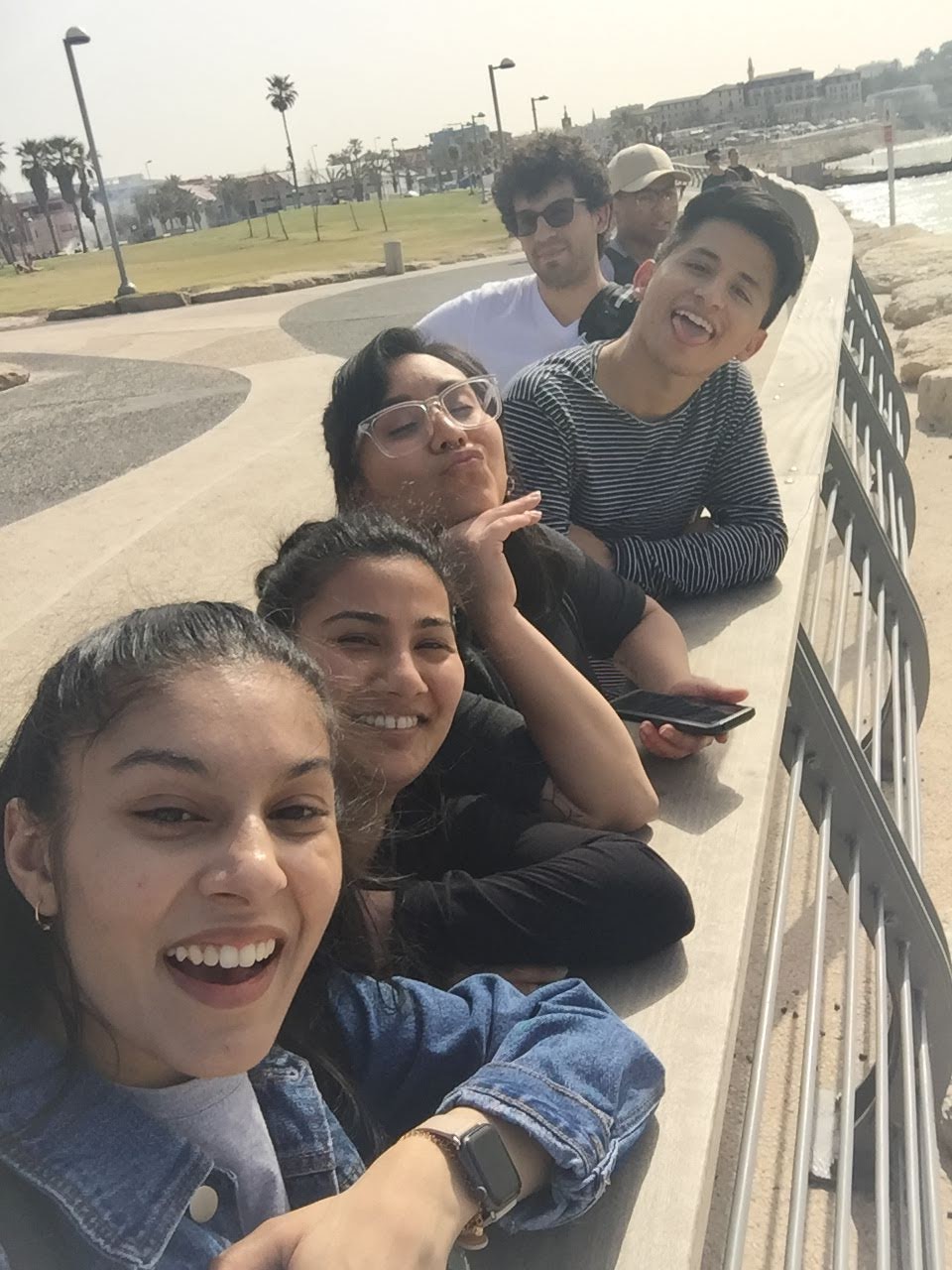Earlier this summer I spent a day at Stanford to be on a committee for a PhD defense. As I grabbed a coffee before driving to Stanford I ran in to one of my SF State colleagues. He was surprised and impressed that I was “allowed” to be on a committee at Stanford.
I work at SF State, a Master-granting institution. This means that we don’t have PhD students and most labs have no postdocs. At SF State, we quickly learn that we are not playing in the same league as our colleagues at PhD-granting institutions. I do biomedical research, but my department of 42 professors hadn’t had an R01 grant for years, in part because we’re advised to not apply for them (I did get one in 2017, in part because I had missed the memo about not applying for them). We are not allowed to apply for HHMI funding because, according to HHMI, our institution is not research-intensive enough. And I don’t think SF State Biology has ever had a McArthur Genius award or a Sloan fellowship. We also have a higher teaching load than most faculty in PhD-granting institutions, which makes it harder for us to write grants and do research.
So, when I am “allowed” to be on a committee at Stanford and rub arms with some of the smartest and most influential population geneticists of our time, it feels good! It reminds me that, even though I work at SF State, I am in their league. And it is not just a committee at Stanford, I often get invited to interesting places. I have been invited for talks at ESEB, SMBE, ASM, Biology of Genomes, a Gordon Research Conference, and PopGroup 2019 in Oxford (UK). In 2018 I am flying to Europe for three different invited seminars. These invitations remind me that I am respected in my field. But the invitations also remind me that I don’t work at these places. When I hang out with colleagues at these trips, they are almost always at institutions where they get better salaries, more research support, and fewer teaching duties [at least in the US. Things are sometimes quite different in Europe]. The obvious question therefore arises: How did I end up at SF State?
How I ended up at SF State University
Now, before I talk about how I ended up at SF State, let me make one thing very clear: since I have been here, I’ve learned that SF State is a great place and a great place for me. I love working there, I have amazing colleagues and students and we do important research. I have thriving collaborations within my department, but also with Chemistry/Biochemistry and Computer Science. The quality of teaching is higher than I have seen anywhere else. For these reasons, I love my work. But those reasons are not why I went to SF State.
I took the job at SF State because I had no other way to stay in academia, since no other department was willing to hire me. Stanford, Berkeley, UC Merced, UCSD and about 50 other schools did not invite me for an interview. The University of Arizona, NYU, UC Irvine, the University of Vienna and a few others did invite me for interviews, but they didn’t offer me a job.
Why did I not get a job at a PhD-granting institution?
It is not immediately clear why it was so hard for me to get an academic job. I had 18 papers on my CV in the last job season in which I applied for jobs. Papers in journals like PLOS Genetics, Genetics, MBE and American Naturalist. A few of these papers were very influential in my field (if you are in population genetics or evolutionary genomics, you have probably heard of soft sweeps – this term was coined by my PhD advisor and myself in 2005). Together, the papers from my PhD are now cited more than 1000 times, which is a lot for theoretical population genetics papers. That success early in my career should have made it possible for me to land a job at a PhD-granting university. I also think that I interviewed quite well, at least the last year I was on the market. After my interview at the University of Arizona (a visit that I enjoyed a lot!), one of the people on the committee wrote in an email: “I have to say, in my opinion, you gave one of the best chalk talks I’ve seen.”
So, I don’t think that my publication record or my interviewing skills explain my struggles on the job market. Here are my alternative hypotheses:
- My work is too interdisciplinary.
- I have a foreign PhD.
- I am a woman and implicit bias makes it harder for women to get jobs.
Why do I think that my gender played a role? Well, first of all because of well-known biases in academia as shown by a large body of published work. For example, Knobloch-Westerwick showed in an experiment that abstracts are rated higher when authored by men (Knobloch-Westerwick, Glynn and Huge, 2013). Moss-Racusin showed in an experiment that faculty judge a male candidate for a lab tech position to be higher quality than the identical female candidate (Moss-Racusin et al., 2012). And Van der Lee showed that women score lower on “quality of researcher” for research grants in The Netherlands, but not “quality of proposal” (van der Lee and Ellemers, 2015). These biases probably exist search committees too.
Secondly, I got insight in the opinions of a committee that was judging one of my job applications, and what they wrote wasn’t pretty. Written reviews for job candidates are uncommon in the US, but one of the jobs I applied for in Europe had a stage where outside reviewers looked at my file and wrote an opinion about me. Three of the reviewers were very positive, but two of them were quite negative. Here are some quotes. Judge for yourself.
A rare look behind the scenes of a committee of reviewers
One reviewer says I am vocal but know nothing about evolution
Reviewer A: “The candidate is an avid organizer (see CV) and can be quite vocal (see the article in PLoS). However, she is not ready for a science leader position.”
This comment suggests that being an avid organizer cannot go together with being a good scientist. Then it says that I am “vocal” in my PLOS Computational Biology paper (2012). Now, I think you’ll agree with me that this is a strange comment about a technical paper in a technical journal. The reviewer may not think it is a good paper, that’s their right, but publishing my results about standing genetic variation and effective population sizes in HIV in a journal like PLOS Computational Biology is what computational biologists do. It is hardly “vocal”.
http://journals.plos.org/ploscompbiol/article?id=10.1371/journal.pcbi.1002527
The reviewer continues: “I feel she needs to acquire more experience in general evolution theory, virus evolution theory, applications to HIV and other important systems, and understand basic principles of data interpretation and parameter handling”
So, this reviewer may think I don’t know theory or data-analysis, but by that time, I had published 16 peer-reviewed papers, 4 of them on new evolutionary theory (soft sweeps and sympatric speciation) and the rest on different experimental systems which all relied on data collection and data interpretation.
Another reviewer suggests I was simply too “light”
Reviewer B: “I do not think that the applicant has shown the ability to build an independent research group at this stage of her career. I hope she will not find my comments too harsh. These are in no way a critique of her abilities but rather the reflection of the fact that her achievements and her project are too light for this position.”
This reviewer thinks I am not ready for a junior group leader position. It is not so clear why he/she thinks this. I had published extensively and my work had appeared in textbooks. I had also successfully applied for research money alone and with others. I had started and run a successful company, coordinated a Master’s program and produced a series of prize-winning videos about evolutionary research. How on earth was I too “light” to run a junior research group?
This reviewer also doubts whether my achievements are actually my achievements.
Reviewer B: “It is difficult to know whether the number of citations the articles from the applicant has attracted is due to her or to her supervisor (in fact, she is not the lead author on her most cited paper, which accounts for 150 citations of over 350). So far, approximately 80% of the citations she has attracted are on articles with her supervisor.”
Well, that’s how academia works. We learn by working with advisors and I have had amazing advisors! It is worth noting here that the paper that got all the citations (Hermisson and Pennings, 2005), is also Joachim Hermisson’s most cited paper.
The same reviewer suggests that my peer-reviewed work in PLoS Computational Biology is scientifically incorrect.
Reviewer B: “The main aspect that struck me while reading this article is that none of the mathematics are shown in the article (everything is in the online supplementary materials). (…) It makes it very difficult for the reader to assess the solidity of the methods and usually implies that the article rests upon the author’s capacity as a writer rather than the scientific correctness.”
Nowadays, in most biology journals it is quite standard to put most or all math in the supplementary materials. There is nothing special about the lack of math in this paper. Plus, if they were worried about the correctness of the math, they could have just read the supplementary materials, instead of implying that the science is wrong. http://journals.plos.org/ploscompbiol/article?id=10.1371/journal.pcbi.1002527
When asked about whether the job environment would be good for me, the first reviewer concludes:
Reviewer A: “I have no information regarding environment, but Dr Pennings hardly needs more stimulation. She needs restraint”
I am not even sure what to say about this comment. She needs restraint?!? [I think I need to have that printed on a t-shirt.] I cannot prove it, of course, but I don’t think a man with the same CV would have been judged like this.
Conclusion
My academic job search was extremely frustrating. After a very successful PhD, an HFSP grant to go to Harvard and Stanford, and several papers from my postdoc time, I expected to be able to land a job as an evolutionary biologist at a PhD-granting institution. That wasn’t the case and I think that sexism played a role.
When you want a job in academia, you need to convince a committee, or sometimes an entire department, that you are the right candidate. One or two people on a committee can sow doubt about a candidate. For at least one of my job applications, two reviewers sowed doubt about me. Among other things, they argued that I was (1) “vocal” and (2) “too light” for the position. They also argued (3) that my papers were not really my achievement. These arguments would unlikely be made about a man. The result was that despite very clear quantifiable achievements (papers, citations and funding), their reviews made it sound like I was a newbie who had no idea what I was doing.
Now it is 4 years later. I am happy at SF State. I am still a successful researcher: I am publishing, bringing in grant money, and I get invited for talks. I love it when I get invited to talk about my research at a conference or when I get to sit on a PhD committee at Stanford, but these invitations also remind me of the times where these very same places didn’t invite me for job interviews. And it reminds me of what these lost job opportunities cost me every day in terms of salary and in terms of lost opportunity (HHMI, if you are reading, I would love the opportunity to apply for a grant with you!).
Of course, I acknowledge that I am privileged and my struggles are small compared to what others face. I am white, straight, married, and I never lived in poverty. So many of my colleagues and my students have to fight even harder because they are Black or Latinx or gay or poor or undocumented or a combination of those.
The silver lining of this story is that thanks to certain doors being closed to me, I ended up in an amazing department that has made opening doors for marginalized people almost its core business. Next to my research, I am now in the business of opening the doors of Computer Science to women and minority students. I am picking up a lot of “door-opening” expertise from Drs Letitia Marquez-Magaña, Kimberly Tanner, Blake Riggs, Diana Chu and others. I will try to take that expertise with me on my trips to conferences and departmental seminars and to contribute to some doors being opened at PhD-granting institutions.
PS: I want to thank the soccer player Abby Wambach for making me see the situation more clearly. Worth watching: https://barnard.edu/commencement/archives/2018/abby-wambach-remarks
Thanks to Diana Chu and Rori Rohlfs for comments on an earlier version of this post.
Tags: academia, gender, job market, research, sexism








 Jazlyn Mooney grew up in Albuquerque New Mexico. She went to high school and college there too (Eldorado High School and University of New Mexico).
Jazlyn Mooney grew up in Albuquerque New Mexico. She went to high school and college there too (Eldorado High School and University of New Mexico).




